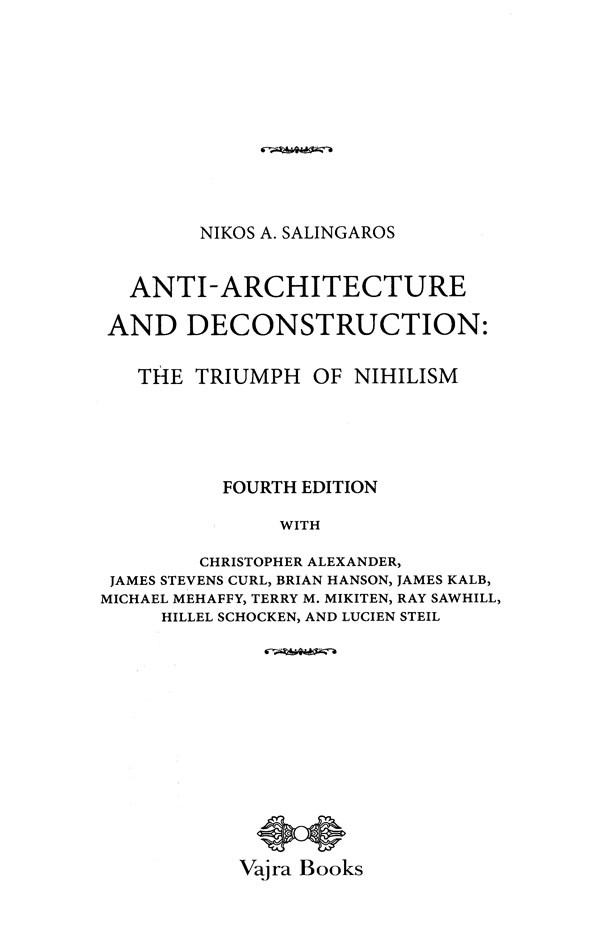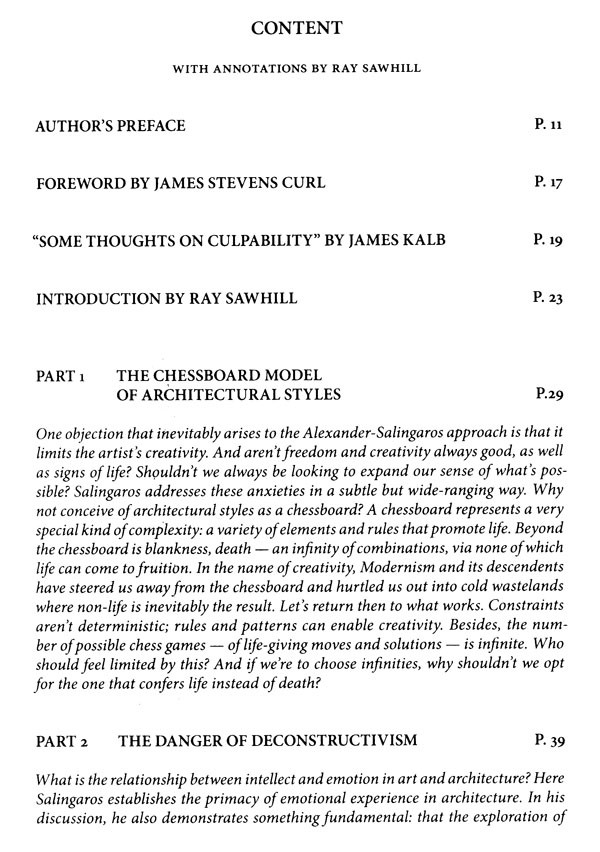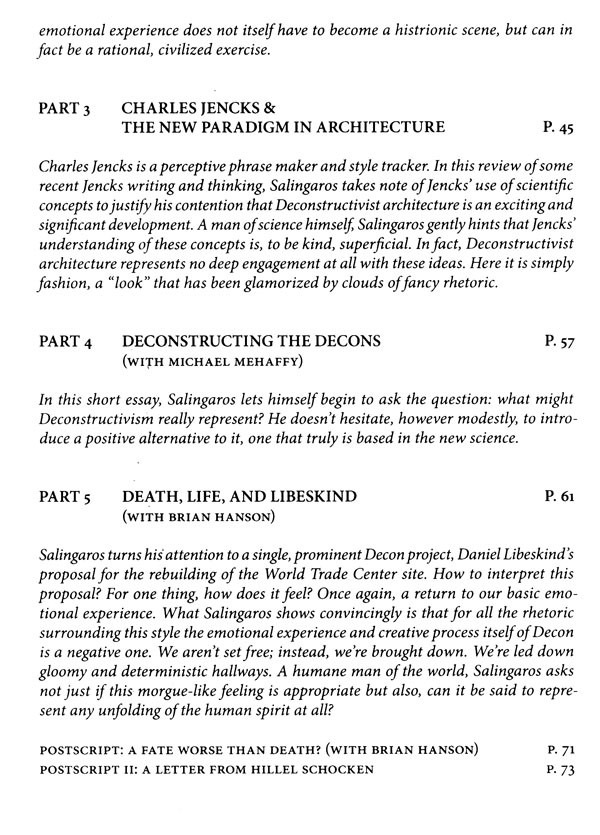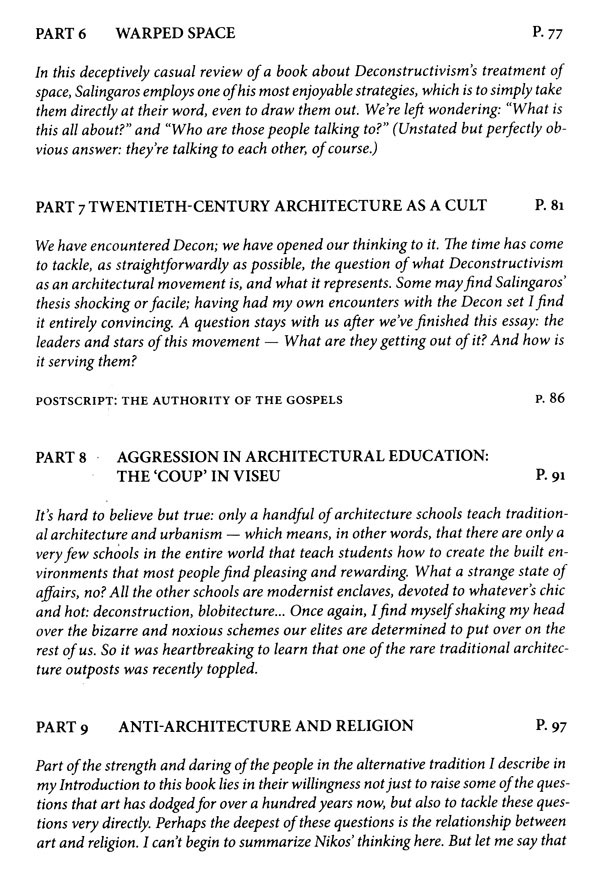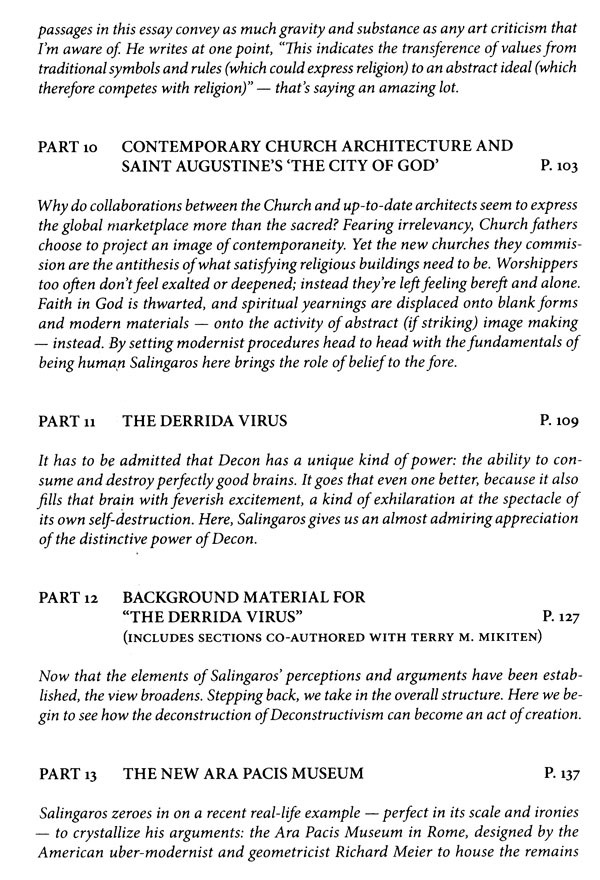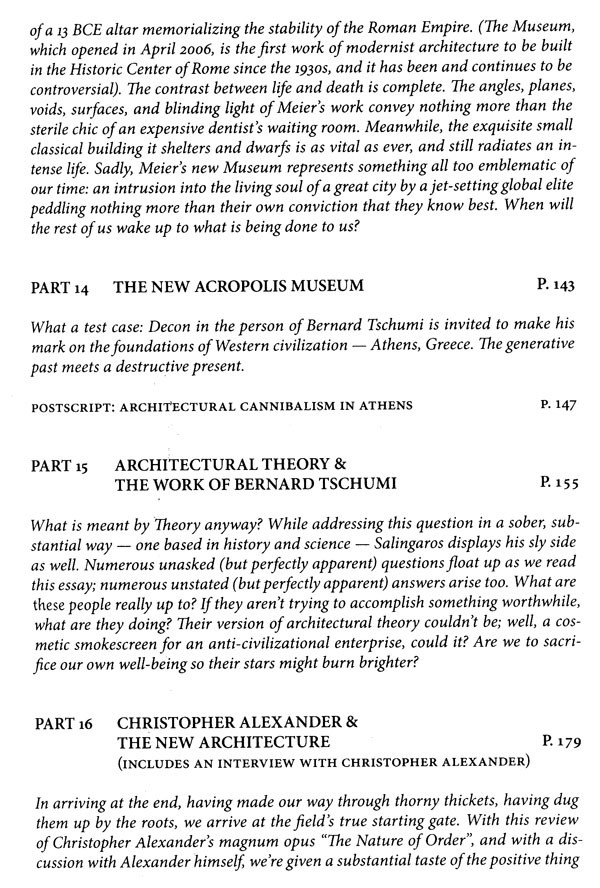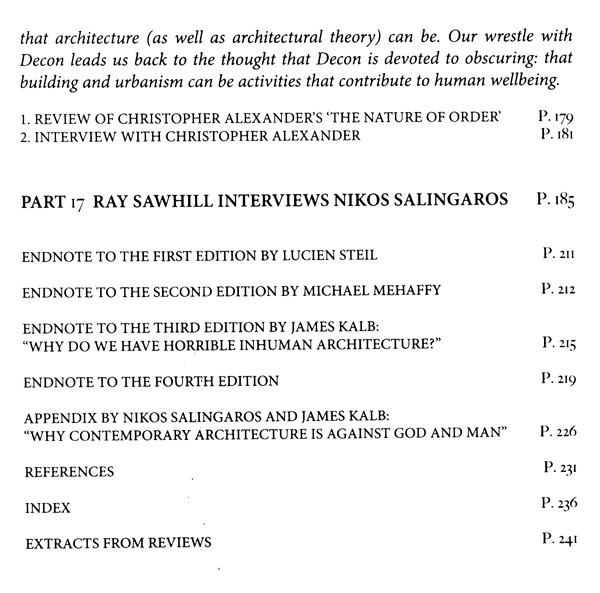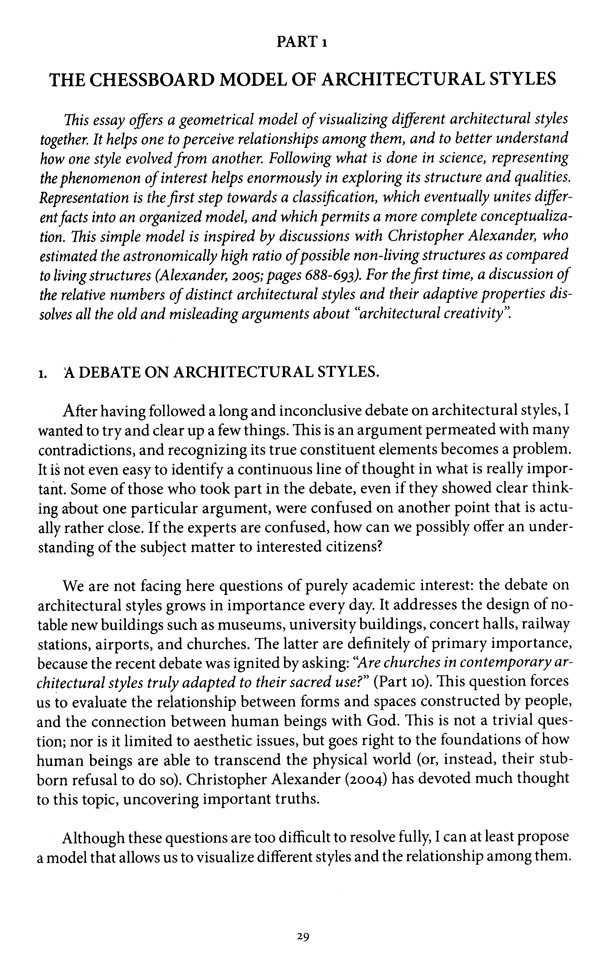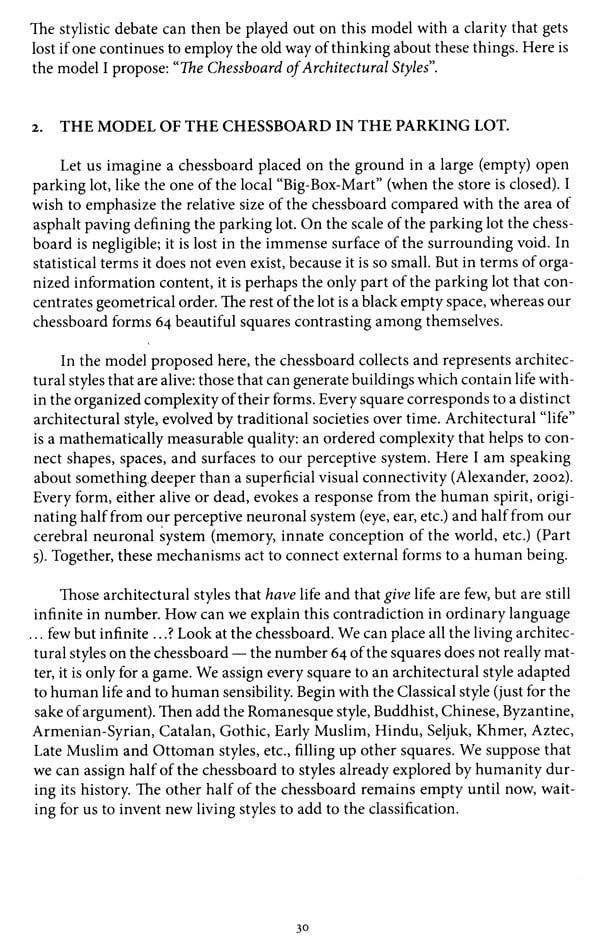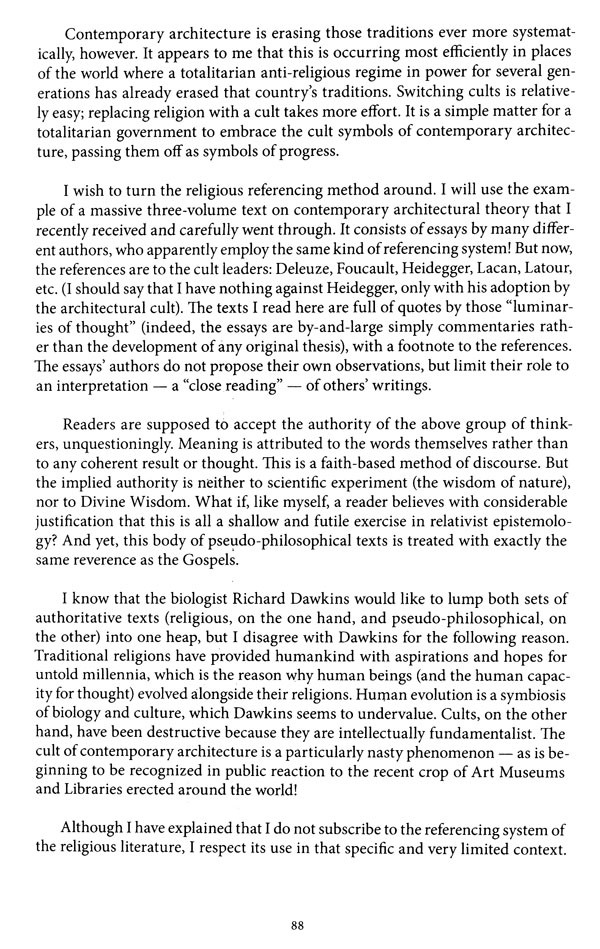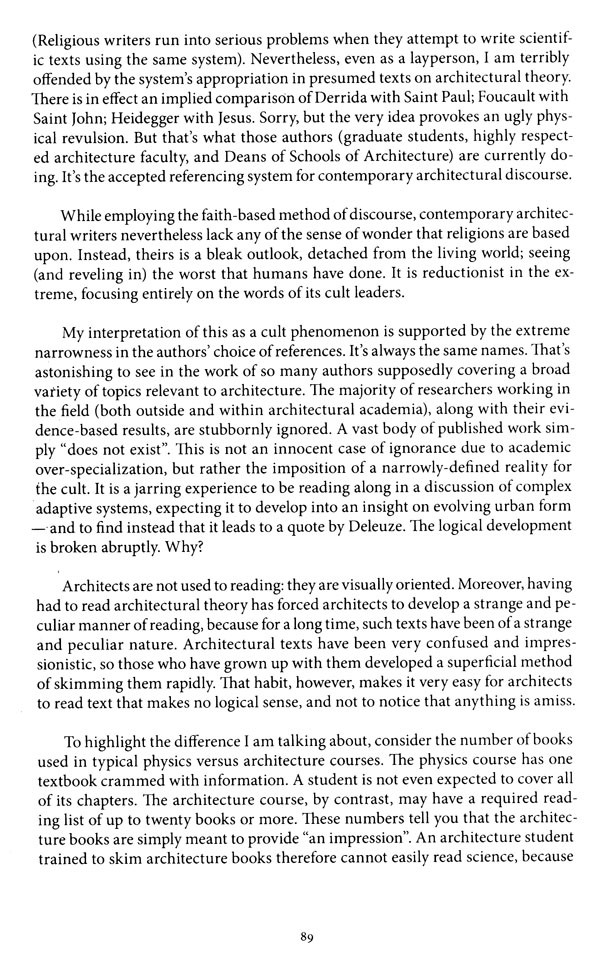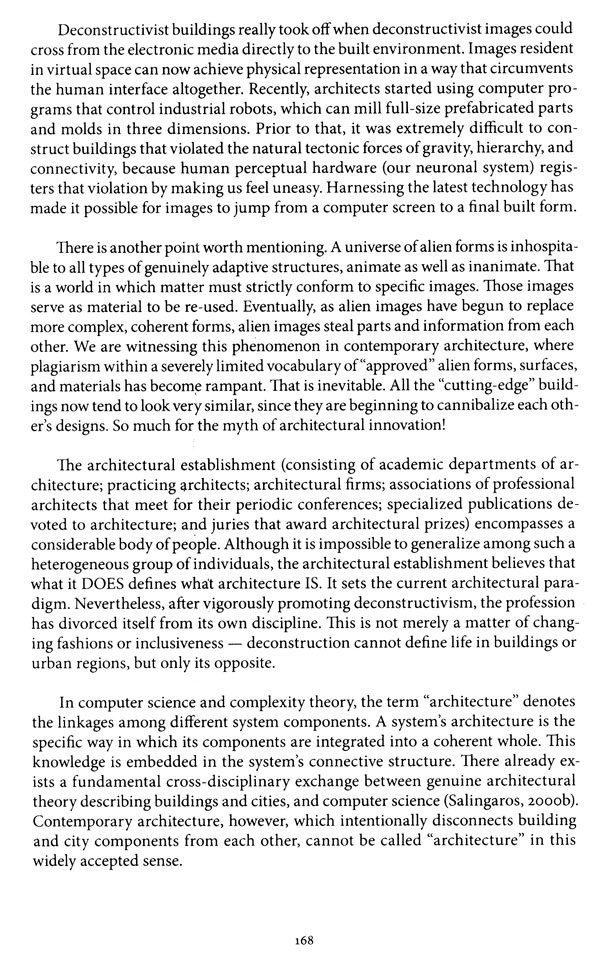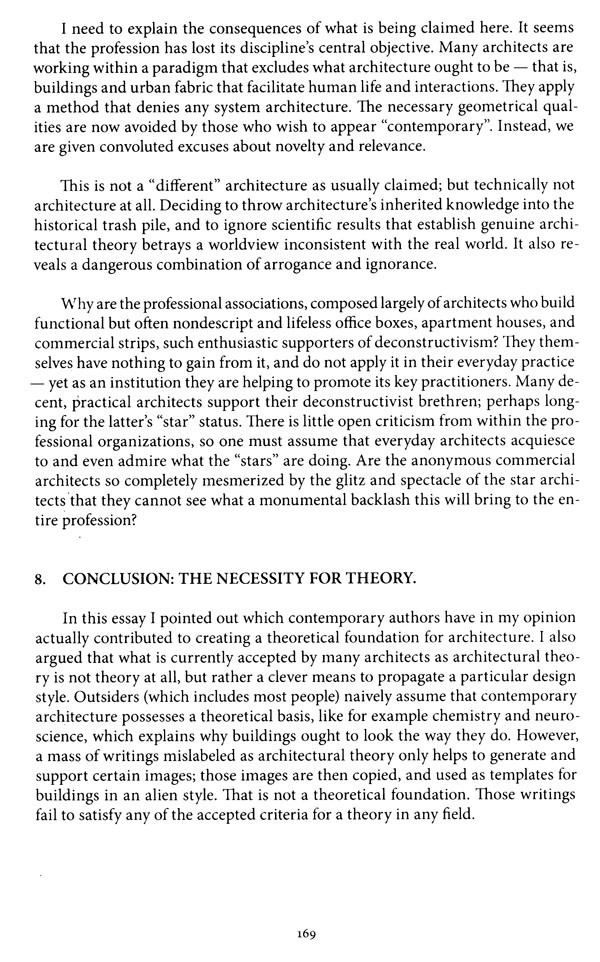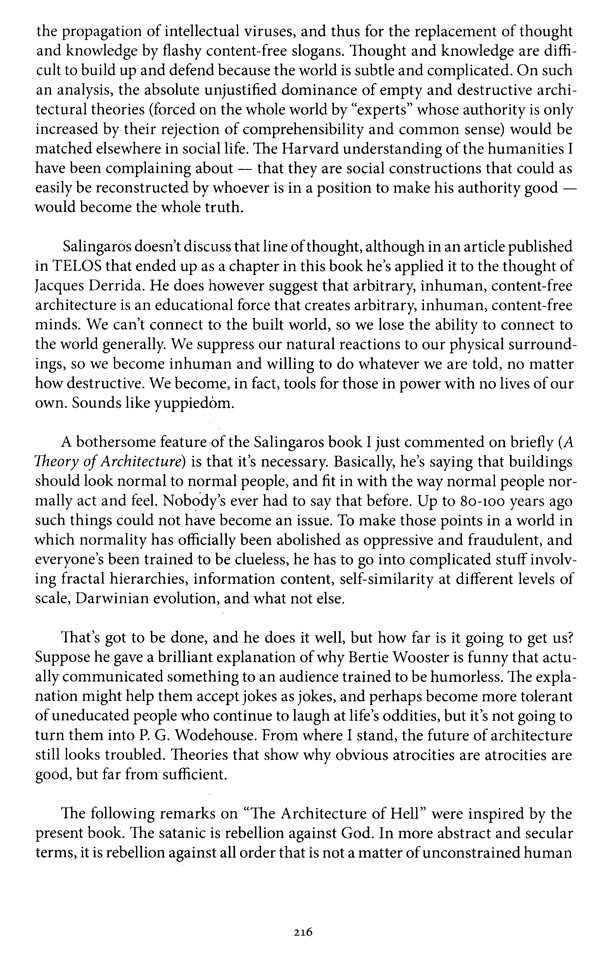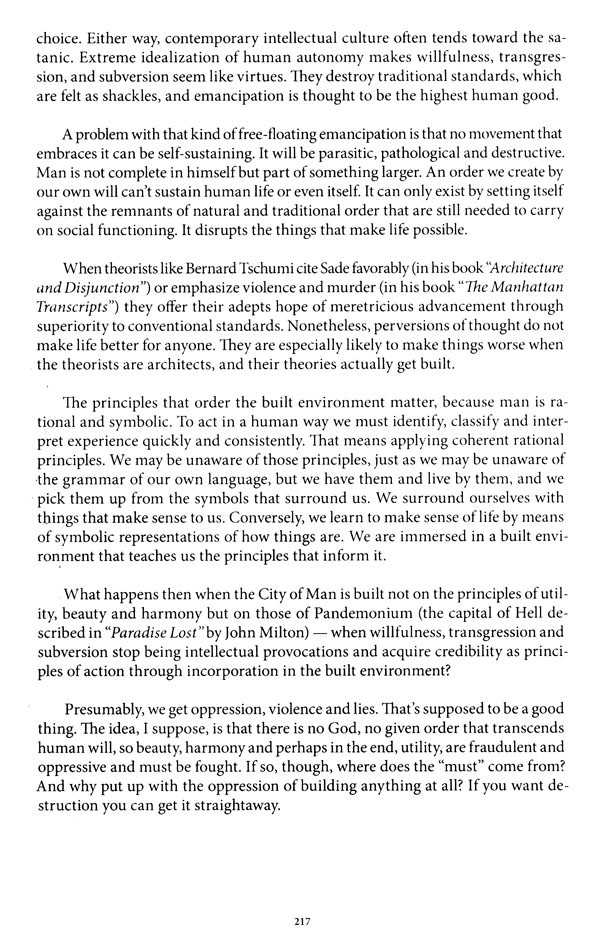
Anti-Architecture and Deconstruction- The Triumph of Nihilism
Book Specification
| Item Code: | UAO670 |
| Author: | Nikos A. Salingaros |
| Publisher: | Vajra Books, Nepal |
| Language: | English |
| Edition: | 2014 |
| ISBN: | 9789937623131 |
| Pages: | 248 |
| Cover: | PAPERBACK |
| Other Details | 9.50 X 6.50 inch |
| Weight | 340 gm |
Book Description
That, however, is a forlorn hope, as most architects seldom read at all: they only look at seductive pictures and absorb slogans. There are a very few honorable exceptions; these are those rare individuals who conserve and restore old buildings. add to them or adapt them with sensitivity and scholarship. It includes those who can still design buildings that delight and enhance life rather than threaten it, and who understand the nature of the materials used in their buildings without having to call in engineers and contortionists to enable their designs to be realized.
The rise of Deconstructivism and its adherents can partly be explained by the spread of the contagion Salingaros, in this essential and timely book, calls "The Derrida Virus", and partly by the Imprimatur given to the style (for that is what it is) by Philip Johnson. Before the 1939-1945 War, Johnson had also encouraged the pandemic of the International Style with the exhibition he and H. R. Hitchcock organized in New York City. Now, Deconstructivism has been hailed as a "New Paradigm" by those who ought to know better, and the cult is being forced on students in those breeding grounds of the ugly and the unworkable, namely the Schools of Architecture. (In my opinion, they ought to be properly renamed "Schools for the Destruction of the Environment", and, in any reasonable society, closed down because of the menace they pose for the future).
This excellent and thoughtful book dismantles the flimsy codification known as Deconstructivism, showing how the ill-educated have been fooled by obfusca tion, which they have mistaken for profundity. It also warns of the wholly negative nature of Deconstructivism. How many more of these so-called "iconic" buildings, with their jagged forms and uncomfortable spaces, their grotesquely impractical corners, their expense, and their disregard for context, can be sustained? Already. LAUS DEO, there are rumblings of discontent, and certain projects are being called into question as support falls away. Despite the pseudo-intellectual apologies for this cult/style, buildings resembling crumpled boxes, or with fronts looking as though they are sliding off in shards, cannot be justified, even using obfuscatory non-lan guage. Nor can all the glossy pages of the journals that purport to be "architectural" (but are nothing of the sort) justify them, raising questions about trades descriptions.
with original purpose, book seems have been quietly em number of influential people. gratified to heard from ar architectural historians, philosophers, scientists, journalists who have my ideas. A few of them have thanked me providing what they useful framework discussing architectural social topics. Others, know personally, picked concepts from this (or from the articles they originally appeared being collected into book). many people have found here convenient rubric analysis.
vocabulary introduced caught On the Internet, in books, and journals, the most offensive contemporary architects are described "anti-architects", paradoxical proliferation inhuman explained in terms viral methods of infection, and monstrous new. analyzed with reference their willful non-adaptivity.
**Contents and Sample Pages**
